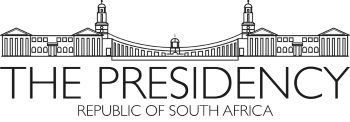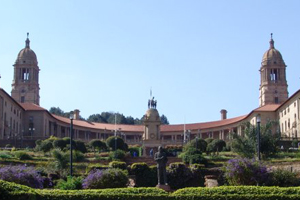|
|
Union BuildingsLike an ancient temple adorning over the city it governs, the Union Buildings are a modern day acropolis, built at the highest point of South Africa's capital city, Pretoria, it forms the official seat of South Africa's government and houses The Presidency. Designed by Sir Herbert Baker in 1908, building began in 1909 and was completed in 1913. It took approximately 1265 artisans, workmen and labourers almost three years to construct, using 14 million bricks for the interior office walls, half a million cubic feet of freestone, 74 000 cubic yards of concrete, 40 000 bags of cement and 20 000 cubic feet of granite. The buildings represent a decadent layer of South Africa's history. Originally built to house the entire Public Service for the Union of South Africa, it was then the largest building in the country and possibly the largest building work undertaken in the Southern Hemisphere at that time. Several other sites were considered, including Muckleneuk Ridge, on the opposite side of the city and Pretorius Square, in the centre of Pretoria, where the City Hall now stands. However, Herbert Baker was strongly in favour of Meintjeskop, which was within a mile of the centre of Pretoria and reminded him strongly of some of the acropolises of Greece and Asia Minor, where he had studied Mediterranean architecture. The concept of an acropolis and a building that agreed with renowned British Architect Sir Christopher Wren's theory that a public building should be a national ornament which establishes a nation, draws people and commerce and makes people love their country easily persuaded the then powers that be, who were at the time, preoccupied with the ideal of establishing a new and united nation. The British high commissioner at the time, Lord Selborne, remarked, "People will come from all over the world to wonder at the beauty of the site and to admire the forethought and courage of the men who selected it". The design of the buildings was largely determined by the nature of the site. Baker envisaged identical wings of rectangular office blocks, each representing one of the two official languages. They were to be linked by a semicircular wing, and the space in-between the two wings was levelled to form an amphitheatre as in the Greek fashion for gatherings of national and ceremonial importance. Baker wanted the buildings to be built of imported granite, but any idea of using anything but South African stone for the most important government building of the new state was unthinkable to those who commissioned it, as a result, the terraces and retaining walls in the grounds are built predominantly of mountain stone quarried on site, the foundation of the building is of granite, while freestone was used for the exterior walls, the amphitheatre and major courtyards. For the overall design of the building, Baker chose the neo-classic architecture of the Italian Renaissance, and also combined an idiom of the English Renaissance, as well as significant elements of Cape Dutch detail, such as in the carved main doorways and fanlights and in much of the wrought-iron brass work and balustrades of the smaller areas. In 1994 the buildings were the scene of much jubilation as they played host to the inauguration of former President Nelson Mandela, South Africa's first democratically elected President, and heralded the beginning of a new era in South Africa's history. |
Menu





